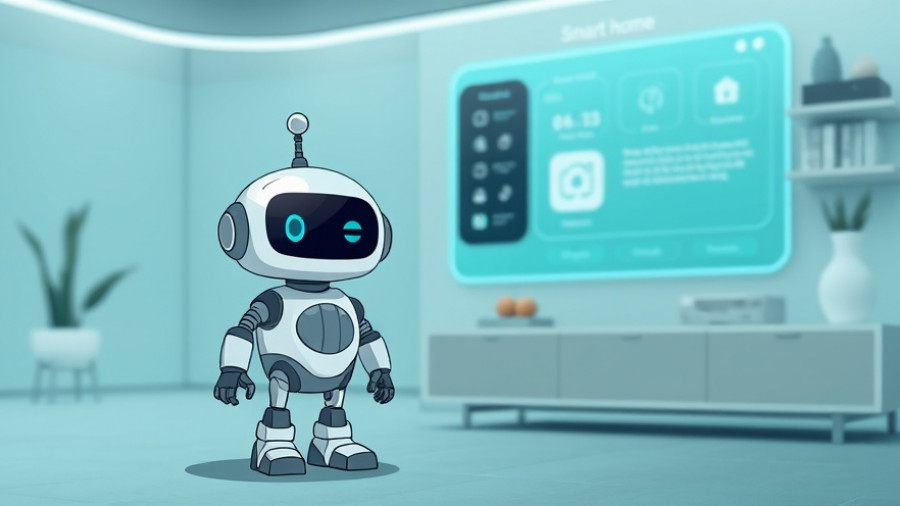
The Rise of Motion Detection in Smart Homes
As technology continues to weave its way into our daily lives, the emergence of systems that blend utility and security is becoming commonplace. Recent developments from Xfinity have turned the Wi-Fi router into a multifaceted tool, enabling it to serve as a motion detector in your home. With Xfinity Motion, not only can you connect your devices to the web, but you can also utilize them to monitor activity in your household. Amid the conveniences this technology offers, it’s essential to weigh the benefits against potential privacy concerns.
How Does Xfinity's Wi-Fi Motion Work?
Xfinity's innovative feature allows select customers to transform their compatible routers into motion-detecting systems. Users can connect their Xfinity Gateway with up to three stationary devices, like printers and smart fridges, creating a detection zone that utilizes Wi-Fi signals. This means any interruption in these signals is flagged as motion, with notifications sent to users to maintain awareness of their home’s activity.
This technology is promising, particularly for busy homeowners. Imagine knowing when someone is moving around your home without the expense of additional security devices. Yet, the system also has limitations — it can't specify the exact location of the detected motion, merely indicating which device has identified it. Moreover, adjusting sensitivity levels to avoid notifications triggered by pets is an option, but even this feature raises questions about accuracy.
Privacy Concerns: Are We Becoming Too Connected?
Despite the potential benefits, the merging of everyday technology with surveillance capabilities is not without unease. Privacy concerns associated with Xfinity's Motion feature are drawing attention. Many people feel uneasy with the notion of being tracked inside their homes. The idea of a device constantly monitoring internal activities can feel intrusive, leading to a broader conversation about how much surveillance is appropriate in our lives.
Concerns arise not just from the technology itself but also from trust in the companies behind it. Users may wonder about data usage and whether the information collected goes beyond the realm of simply detecting motion. What safeguards are in place to ensure user information remains private? And what happens to this data after it is collected?
Understanding the Balance: Security vs. Privacy
For homeowners, especially in urban areas like London, where home security is a growing concern, weighing the balance between enhanced security and privacy is crucial. Homeowners are constantly on the lookout for reliable ways to protect their residences, yet they also fear the implications new technologies may have on their most personal spaces. This tension amplifies the need for transparent communication from tech companies about how their products function and what data they collect.
The benefits of a smart and connected home are undeniable, with convenience and enhanced security at the forefront. Representatives from Xfinity suggest that the feature is designed with privacy considerations in mind; however, homeowners must remain vigilant and informed. Ensuring protections and understanding limitations can help ease fears surrounding technological advancements in smart homes.
Future Predictions: The Direction of Smart Home Technology
The Xfinity Motion feature is only the tip of the iceberg. As smart home technology evolves, other companies are likely to present similar offerings, driven by the demand for interconnected systems that provide peace of mind. As these devices become commonplace, it’s vital for users to remain aware of the implications for their privacy.
Looking ahead, there’s potential for regulatory discussions around how smart home devices interact with privacy. These debates could shape the future landscape of home technology, pushing for innovations that prioritize user control over data collection without sacrificing convenience or security.
Ultimately, as homeowners in London embrace these advancements, it becomes essential to understand that along with the conveniences of smart technology comes the responsibility of informed usage. Knowing your devices, understanding their functions, and actively managing your privacy preferences will be key factors as we step into a future filled with possibilities.
Embracing the era of smart and connected homes can transform everyday life, but it’s natural to question and evaluate what this evolution means for personal privacy.
Explore the conversation around smart home technology and privacy, and consider how it impacts your home life. Staying informed will ensure your home is not just smart, but also a sanctuary that protects your privacy.
 Add Row
Add Row  Add
Add 




Write A Comment